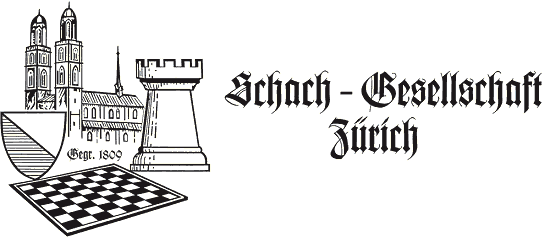



The «Zurich Chess Challenge 2014» will be the first encounter between the newly crowned World Champion, Norway’s Magnus Carlsen, and the former title holder, India’s Viswanathan Anand after their recent match in Chennai. From Wednesday, 29 January to Tuesday, 4 February 2014, they will compete in the 3rd Zurich Chess Challenge along with four other great chess stars: Levon Aronian (Armenia), Hikaru Nakamura (USA), Fabiano Caruana (Italy) and Boris Gelfand (Israel).
| # | Player | Country |
Rating
|
world
|
| 1 | Magnus Carlsen | Norway |
2872
|
1
|
| 2 | Levon Aronian | Armenia |
2825
|
2
|
| 3 | Hikaru Nakamura | USA |
2789
|
3
|
| 4 | Fabiano Caruana | Italy |
2782
|
6
|
| 5 | Boris Gelfand | Israel |
2777
|
8
|
| 6 | Vishy Anand | India |
2773
|
9
|
According to the January 2014 FIDE ratings these six players average 2800.83 points, which rounds to 2801. That makes the event a category 23, and the strongest tournament in chess history.
The main sponsor is Oleg Skvortsov of the «International Gemological Laboratories», Moscow, with the Zurich Chess Club acting as organizer. Skvortsov not only loves chess, but also plays the game and supports chess events. Furthermore, he knows many of the greatest chess players in the world personally and has played a lot of games with them.
The first Zurich Chess Challenge in 2012 was a match between Kramnik and Aronian. The second event in 2013 was a double-round robin with Kramnik, Anand, Caruana and Gelfand.
The event is a six player round robin, with a rate of play of 40 moves in 120 minutes, then 20 moves in 60 minutes and the rest of game in 15 minutes, with an increment of 30 seconds per move starting after move 61. Special rule: in case of a draw before move 40, an additional rapid game will be played (which does not count for the overall result).
| Wed. | January 29: | 19:00 Opening Ceremony & Blitz |
| Thu. | January 30: | 15:00 Round 1 |
| Fri. | January 31: | 15:00 Round 2 |
| Sat. | February 01: | 15:00 Round 3 |
| Sun. | February 02: | 15:00 Round 4 |
| Mon. | February 03: | 15:00 Round 5 |
| Tue. | February 04: | 13:00 Rapid Tournament 19:00 Closing Ceremony |
The winner will be the one who scores the most points between the classical tournament and the rapid.
All games will be commented by Yannick Pelletier and Werner Hug and broadcast live via Internet. All the games, includin the blitz tournament, will be broadcasted on the Playchess server and the normal time control will have the following commentators:
| Date | English | German | |
|
30.01.2014 |
Round 1 |
Daniel King |
Klaus Bischoff |
|
31.01.2014 |
Round 2 |
Daniel King |
Oliver Reeh |
|
01.02.2014 |
Round 3 |
Alejandro Ramirez |
Klaus Bischoff |
|
02.02.2014 |
Round 4 |
Daniel King |
Klaus Bischoff |
|
03.02.2014 |
Round 5 |
Alejandro Ramirez |
Klaus Bischoff |
The tournament will also host a great deal of special guests including Peter Leko, Jan Timman and Gennadi Sosonko.

Hou Yifan (pictured in a recent award ceremony hosted by CCTV in China, next to GM Ye Jiangchuan) will be giving a clock simlutaneous exhibition against the top six Swiss juniors.

The tournament takes place in the time-honored Hotel «Savoy Baur en Ville» (Paradeplatz,
Zurich, Switzerland) in the «Festsaal», the venue of many a famous chess event in the past.

In 1953, Zurich established itself as one of the most important venues for chess. The Zurich International tournament was held here and the challenger to Botvinnik was to be found in this tournament. It was none other than the great Vasily Smyslov, who won the tournament with 18/28, a whopping two-point margin over David Bronstein, who finished second.
Thus Smyslov qualified to challenge Botvinnik in 1954, a match that he tied with 12-12 score but according to the prevailing rules the world champion retained the title! Still, as you can see, Zurich had a great impact on the fate of World Championship, as a challenger was to be sought from here. Secondly, David Bronstein had written an excellent book on the Zurich tournament of 1953, which according to many great chess players is a must read. I have personally read the book in parts and some commentary has stuck in my memory. Especially an anecdote about Bronsteins explanation of dark square weaknesses in the position:
I have long suspected, whenever the books I have read began discussing dark square weaknesses or an attack on the dark squares, that the subject under discussion was not only beyond my understanding, but beyond the author's as well. "Certainly", I would say to myself, "it must be true that the enemy dark squares will be weak if his pawns stand on light squares and he loses his dark square bishop. But if he then removes all of his pieces from the dark squares, what will be left for me to attack?"
Such was my line of reasoning, until the day I realized that a weakness of the dark squares is also weakness of the pieces and pawns on the light squares. Light-square weakness are also possible, resulting in a weakening of the enemy pieces and pawns on the dark squares - as occurred, for example, in the Geller - Najdorf game Round 13. The point of an attack on the dark squares is that, by placing my pawns on the dark, I attack my opponent's pieces and pawns on the light.

[Event "Candidates Tournament"] [Site "Zuerich"] [Date "1953.08.30"] [Round "1"] [White "Szabo, Laszlo"] [Black "Geller, Efim P"] [Result "0-1"] [ECO "E03"] [PlyCount "118"] [EventDate "1953.08.30"] [EventType "tourn"] [EventRounds "30"] [EventCountry "SUI"] [Source "ChessBase"] 1. c4 Nf6 2. g3 e6 3. Bg2 d5 4. d4 dxc4 5. Qa4+ Nbd7 6. Nf3 a6 7. Qxc4 b5 8. Qc6 Rb8 9. Bf4 Nd5 10. Bg5 Be7 11. Bxe7 Qxe7 12. O-O Bb7 13. Qc2 c5 14. dxc5 Nxc5 15. Rc1 Rc8 16. Nc3 Nf6 17. b4 Na4 18. Qb3 Nxc3 19. Rxc3 Rxc3 20. Qxc3 O-O 21. Rc1 Rd8 22. a3 Nd5 23. Qd4 f6 24. Ne1 e5 25. Qc5 Qxc5 26. bxc5 Bc6 27. Rd1 Rd7 28. Bh3 Re7 29. Nc2 a5 30. Bg2 Rd7 31. Bh3 Re7 32. Kf1 Kf7 33. Ke1 Rc7 34. Rd3 Bb7 35. Ne3 Rxc5 36. Nf5 Bc6 37. Nd6+ Kf8 38. Bg2 g6 39. Kd2 Ke7 40. Ne4 Rc4 41. f3 f5 42. Nf2 Ra4 43. Nd1 e4 44. fxe4 fxe4 45. Rb3 Rd4+ 46. Kc1 b4 47. Ne3 Nc3 48. axb4 Nxe2+ 49. Kb1 Ba4 50. Rb2 Nc3+ 51. Kc1 axb4 52. Rd2 Rxd2 53. Kxd2 Kd6 54. Ng4 Kc5 55. h4 Kd4 56. h5 gxh5 57. Ne3 Nb1+ 58. Ke2 Bb5+ 59. Kf2 b3 0-1
See Shagar Shah's blog for more coverage of Zurich

In August 2009 there was a spectacular event celebrating the 200th jubilee of the oldest chess club in the world: the Schachgesellschaft Zürich, which was founded in 1809. Attendees included Kasparov, Anand, Karpov, Korchnoi, Kramnik, Spassky, Ponomariov and Topalov. At the time Richard Forster and Christian Rohrer retraced the historical development of the club for us:
Links
The games will be broadcast live on the official web site and on the chess server Playchess.com. If you are not a member you can download a free Playchess client there and get immediate access. You can also use ChessBase 12 or any of our Fritz compatible chess programs. |